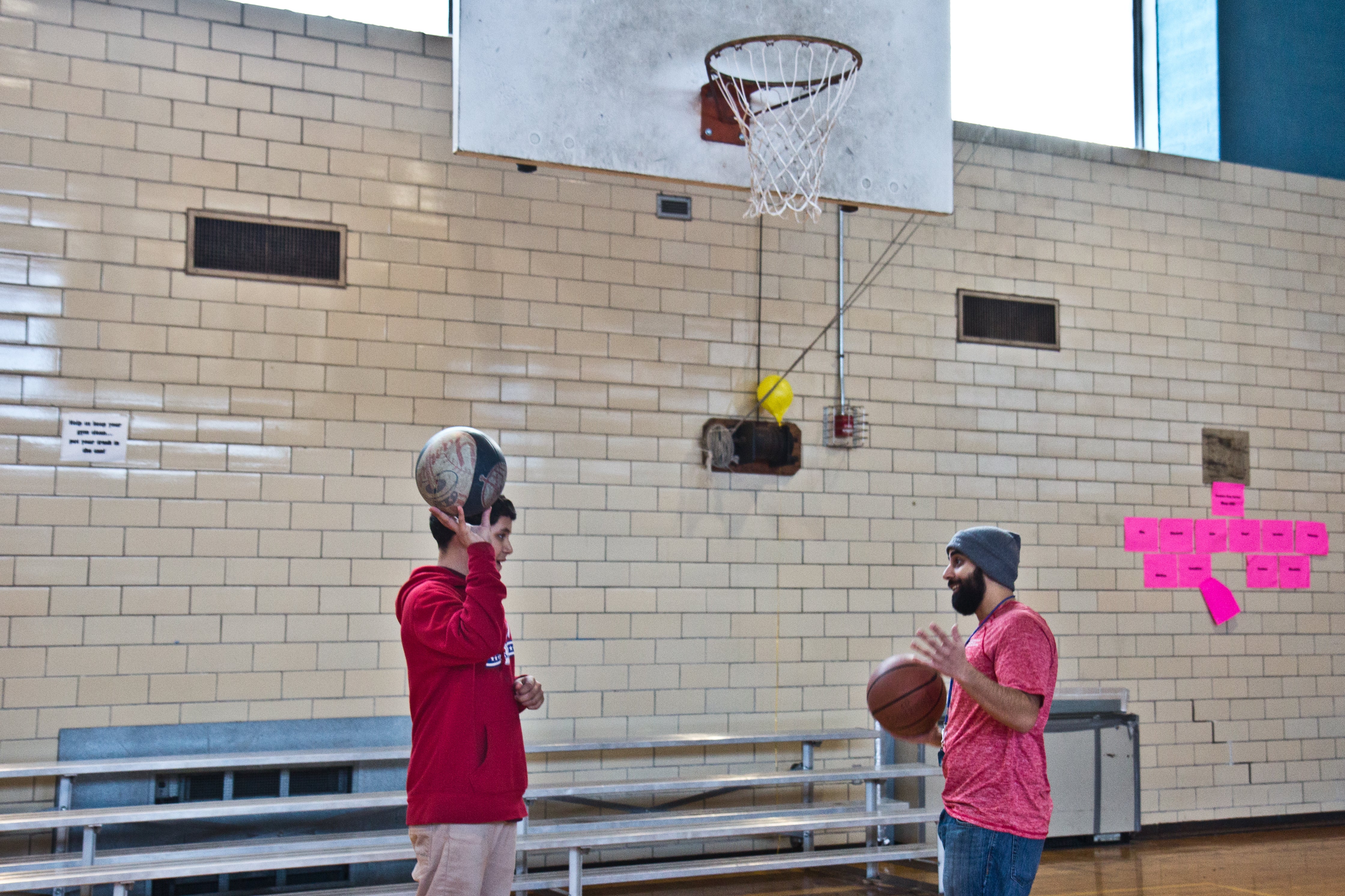Attracting a younger generation of recreation leaders for the city

Each year, it takes an army of seasonal employees at Philadelphia Parks and Recreation to make the summer a little more hospitable. By the time public schools close in June, the department brings on about 400 lifeguards and 400 maintenance aides to staff the city’s pools, a hiring process that begins the previous winter. There’s also a need for special staff who deliver programming across the system — jobs as varied as movie night assistants and trainers for environmental education.
In all, Parks and Recreation’s seasonal workforce accounts for millions of dollars in salaries each summer. Allowing kids to escape the doldrums of summer is priceless, but there’s a spillover benefit to this built-in hiring spree. One of the department’s long-term priorities is to create a younger and more diverse workforce; looking at seasonal and part-time staff for potential full-time careers is one way to get there.
“Making sure that our recruits are as diverse as possible means that in five, ten, fifteen years from now, the people leading this department in the high-level civil service positions will also be diverse,” said Commissioner Kathryn Ott Lovell.
There’s also a more immediate need for youth and diversity at the 80-plus recreation centers across the city. The day-to-day life of a rec leader varies depending on the size and location of the center, and also the seniority of the individual rec leader, but it’s generally a position that demands boundless energy — the ability to bounce between youth mentoring, equipment maintenance, and conflict mediation on any given day. “We often catch the youth and adults in this city that every other department can’t handle,” said one rec leader, Aaron “Shaggy” Hoffer.
The average age of a rec leader in Philadelphia is 43, according to demographic data provided by the Department of Parks and Recreation. (The average age for the city workforce as a whole is 45 years old, according to a 2017 diversity workforce report published by the Kenney administration.) As for race, the rec-leader demographics trail the diversity of the overall public workforce, which itself trails Philadelphia’s population: Sixty-six percent of rec leaders are white. There’s gender imbalance, as well: Men outnumber women in rec-leader positions, 170 to 101, a disparity that roughly equals that of the city workforce as a whole.
Shaking up these demographics has taken on new urgency with Mayor Jim Kenney’s Rebuild initiative, a highly anticipated $500 million program that aims to renovate public parks, libraries, and recreation centers throughout the city. Equity and inclusion goals are two pillars of Rebuild. Interactions with frontline staff will play a role in deciding whether residents embrace the new-look facilities after the upgrades. Having rec leaders who are more reflective of the neighborhoods in which they serve and who are able to relate to the young people walking through the doors is likely to play a significant role in shaping the public legacy of Kenney’s signature program.
“If you don’t have qualified, trained staff who are equipped to run recreation centers, this [Rebuild] is all going to be a waste of time,” Tracey Gordon, a community activist, said during the first meeting of the Rebuild Oversight Board in November. “If you have a 75-year-old director of a recreation center, as opposed to somebody who maybe went to college and played basketball… we need some active, creative staff to come out and engage the community.”
PROGRESS TO DATE
Parks and Recreation has had some notable success in hiring and recruiting younger staff. “There’s a new crop of rec leaders that are scattered throughout the system who are the future of the department,” said Ott Lovell. “They’re rec leaders for the 21st century, not only actively engaged in sports, but also community activists.”
When she became commissioner two years ago, Ott Lovell sought out new ways to recruit, reaching out to neighborhood organizations, historically black colleges and universities, and the ranks of part-time and seasonal staff who might want to make the transition to full-time positions.
One of those new recruits is 28-year-old Julien Carrasquillo, a leader trainee at Rivera Rec Center in Fairhill. He grew up nearby and played basketball at Rivera as a kid. “I started off as an ARL, which is a permanent part-time position,” he said, before clarifying the departmental jargon: “ARL stands for assistant recreation leader.”
Carrasquillo took a circuitous path back to Rivera. He studied political science at the University of Michigan and worked as a community organizer in the Midwest before joining Philadelphia Parks and Recreation. “It doesn’t seem to make sense with my background,” he said of the job, although as he’s grown into it, he’s seeing more and more similarities. “I can still do the same sort of stuff around galvanizing the community, but now it’s more about doing it within the context of the rec center.” Plus, he said, now he gets to work with youngsters.
Moving from another profession into work as a rec leader can be a sticky process. Arcane rules within the civil service system — which broadly governs HR at city departments — make it hard to bring on new staff with any sort of regularity. For example, a test that’s administered to field applicants for the position of “rec leader trainee” — which requires a bachelor’s degree and has a starting salary of about $33,000 per year, with benefits — is given only once every two years. Before administering another test, Parks and Recreation must first give all applicants proficient on the previous test a chance to proceed through the hiring process.
The civil service system was designed to curb patronage in public-sector hiring, but Ott Lovell said it’s now having the collateral effect of slowing down the drive to diversify the workforce. “The civil service process and system has been the single greatest challenge I’ve faced as Parks and Rec commissioner,” she said.
Still, the last time the trainee test was given, in 2016, there was progress, Ott Lovell said. “We did a big recruitment effort. I’m proud to say that we increased the percentage of people of color.”
KEEPING NEW HIRES
Changing the demographics at Parks and Recreation is not only a question of recruitment, but also retainment. The slow pace of the civil service process, which also affects promotions, has stifled many new employees. “One colleague of mine who left [for another city department], his biggest gripe was the lack of mobility,” said Hoffer, 37, who is entering his seventh year as a rec leader. “He felt that the [process] hurt his career, because he’s a go-getter.”
There have been times when promotions have been fast-tracked, although that poses another set of problems. When the recession took hold in city departments in 2008, Mayor Michael Nutter’s budget cuts and layoffs were felt deeply at Parks and Recreation. The number of positions eliminated was one thing. They also caused an imbalance, with less-experienced rec leaders having to be promoted more quickly than usual into managing larger facilities. In other words, the career ladder got out of whack.
“Around 2008, when we got hit with a budget crunch, people were able to transition quickly,” said Bill Salvatore, one of Ott Lovell’s deputies — too quickly, he argued. “If you needed a leader three, you had to pull someone off the leader two list, and they may have only been there for a year.”
Since coming on to head the department, Ott Lovell has tapped Salvatore, a longtime rec leader, with restoring more continuity and mentorship within the ranks. He’s instituted a rec leader “academy” that not only refreshes staff about nuts-and-bolts work, from technology training to community-engagement advice, but also functions as a way to reach the younger rec leaders and not allow them to float through the system without mentoring.
“Anyone who had that connection with a rec leader, so that they were with them for a good amount of time, got exposed to the department’s offerings; going to retirement parties, you pick up institutional knowledge,” said Salvatore. “You almost innately learn how to engage with citizens.” In other words, the academy is not just about learning how to operate a shot clock for the basketball court, it’s also about skills like engaging with immigrant communities and conflict resolution.
Several young rec leaders interviewed praised the academy and the connections they’ve made through it. One of them was Steven Jacobs, a rec leader at Finnegan Playground in Southwest Philadelphia, who sees for himself a path to a long-term future at Philadelphia Parks and Recreation.
“I’ve got friends working in corporate America, friends working odds and ends, all sorts of stuff,” Jacobs said. “When they see what I’m up to, they think I have a pretty sweet job.”
This article has been updated to clarify the number of positions filled to staff pools in summer.
WHYY is your source for fact-based, in-depth journalism and information. As a nonprofit organization, we rely on financial support from readers like you. Please give today.





